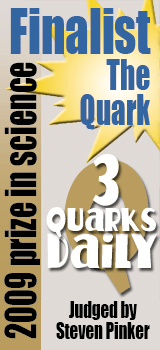The Hurdles of Nurdles
Perhaps you’ve heard of the Pacific Trash Vortex, a.k.a. “the Eastern Garbage Patch.” In the middle of the Pacific Ocean, in the midst of what oceanographers call the North Pacific Gyre, lies a massive stew of garbage two times the size of Texas. Most of the visible trash is plastic—thanks to plastic’s fabulous floatation capabilities. Bottle caps, traffic cones, plastic bags, six-pack rings, tires, nets, cups, bottles, toys, motor oil containers, and nurdles, lots and lots of nurdles. It’s all there, collected by nature’s street sweeper, the gyre.
A gyre is a large circular ocean current. Gyres flow in a clockwise direction in the northern hemisphere and a counterclockwise direction in the southern hemisphere. As the gyre flows, it picks up anything nearby, gradually pushing it towards the center of the gyre. Because there are gyres in every ocean body, there are garbage patches in each ocean, but the Eastern Garbage Patch appears to be the worst.
As Swamp Thing told us in the early ‘90s, plastic doesn’t biodegrade. If Swamp Thing didn’t pick up Omar and Darryl’s plastic cup, it would have gone through a process of photodegradation where sunlight would have broken the plastic into smaller pieces until it became plastic dust. Plastic left in lakes, rivers, and the ocean take longer to photodegrade than plastics on land because the water keeps the plastic cool. In the North Pacific Gyre, scientists have measured six times more plastic than zooplankton.
And then there are nurdles. Nurdles are chickpea-size plastic resin pellets. Each year, more than 250 billion pounds of the little buggers are shipped to plastic processors where they are molded into the form of plastic we’re used to seeing. Nurdles are small and light so they’re hard to wrangle. Studies estimate that nurdles make up 10% of the plastic debris found in the oceans and on beaches worldwide. That means that 10% of our plastic debris hasn’t even been used yet—not for a girdle, a hurdle, or even a toy turtle.
Nurdles are hoarders. They suck up persistent organic pollutants (POPs) like DDT and PCBs from the surrounding waters. And then they hold on to the toxins so that a single nurdle is one million times more toxic than the water in which it floats.
Toxic or not, these cute little nurdles look an awful lot like fish eggs to a bird or fish looking for a snack. Plastic bags look a lot like jellyfish to a hungry turtle and brightly colored pieces of plastic look like baitfish to foraging seabirds. And so the critters devour plastic—Dutch scientists found 1,603 pieces of plastic in a single bird. The UN estimates that plastic waste kills up to a million seabirds, 100,000 marine mammals, and zillions of fish each year. (Some of these animals choke on plastic debris, some die of starvation and some get caught in the debris and drown.)
Why is plastic the culprit? Because plastic never really goes away. When we recycle plastic we save it from a landfill—or a waterway. But most plastic can’t be recycled into plastic because of its tendency to hold onto pollutants. If you try to burn the pollutants (or say, milk residue from a milk jug) off the plastic, some plastics release deadly vapors. Recycling plastic is still a great habit—how else would we make fleece jackets—but recycling plastic doesn’t reduce the amount of virgin (new) plastic in the world. And that demand for virgin plastic means that more and more nurdles will be shipped worldwide—and undoubtedly, some will escape.






Toxin accumulation or not, you would think a concentrated patch of free plastic would attract at least a few enterprising recycling plant entrepreneurs…
Plastic — bah — I have been waging war on the filthy stuff for over a year now and I don’t mean just refusing carrier bags. Each month I veto a plastic/plastic packed product and substitute a better packaged, more sustainable, biodegradable options. Usually I can find something.
Great and utterly disturbing post. This is the legacy that we leave our children…